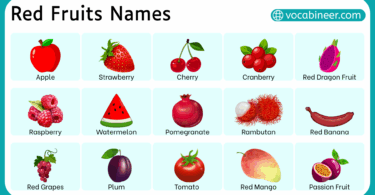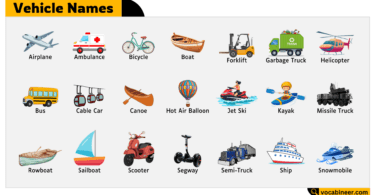Flying animals are living creatures that use wings or body parts to move through the air, like birds, bats, and insects. Learning flying animals names in English helps you know different types, such as raptors, songbirds, and flying mammals. This topic includes related words like winged animals, birds, and creatures that fly, designed to help you understand how these animals fly and how they are grouped clearly and simply.
In This Page
What are Flying Animals?
Flying animals are creatures that can move through the air using their wings, membranes, or special body structures. These animals may fly naturally or glide with the help of extended flaps or stretched skin. Flight helps them travel, find food, escape danger, or migrate across regions.
There are two types of flight:
- Natural flight — Animals that can fly or glide by their own effort, like birds or bats
- Aided flight — Animals that use external forces or gliding structures, like flying squirrels
Below are some common examples of flying animals:
- Eagle — A powerful bird of prey with sharp vision
- Butterfly — A colorful insect known for fluttering wings
- Bat — The only mammal capable of true flight
- Flying fish — A marine animal that glides above water
Common Flying Animals Name List in English with Pictures
Crow
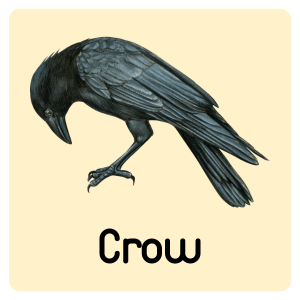
Pigeon
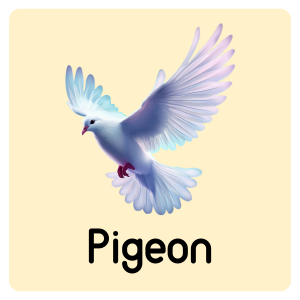
Parrot
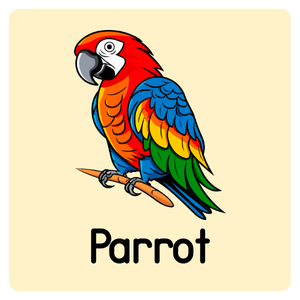
Owl
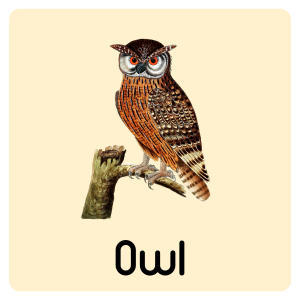
Eagle
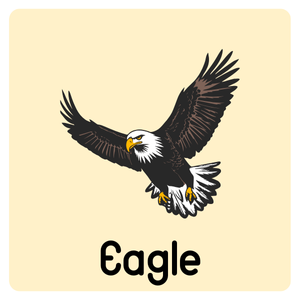
Bee
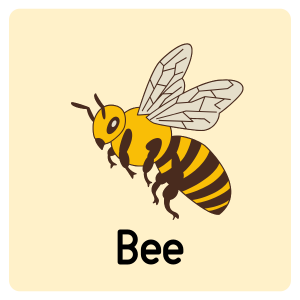
Housefly
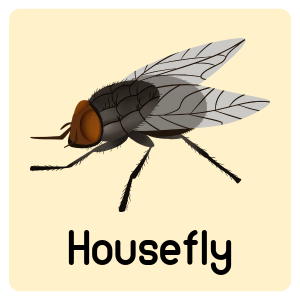
Butterfly
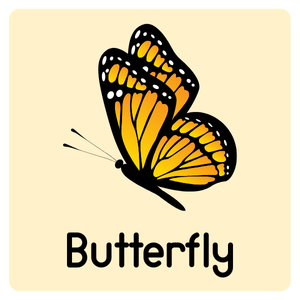
Locust
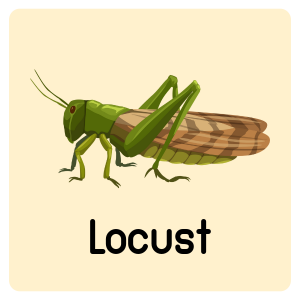
Moth
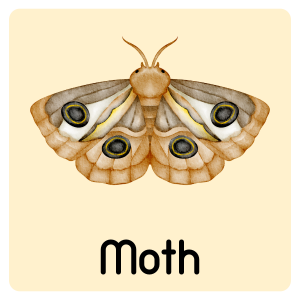
Mayfly
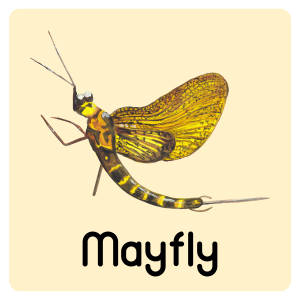
Red kite
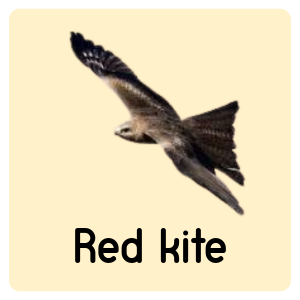
Flycatcher
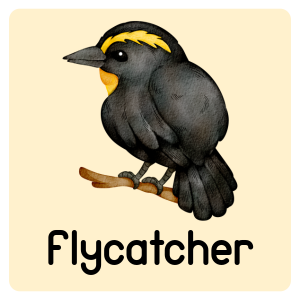
Hawk
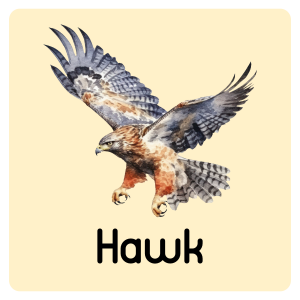
Goose
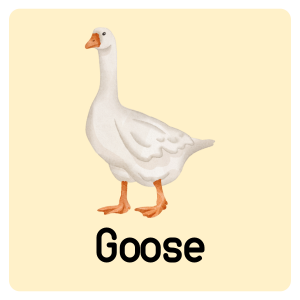
Gnat
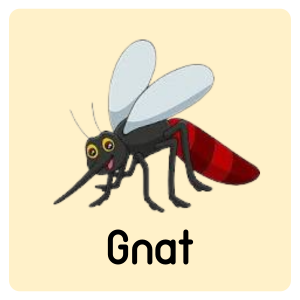
Bat
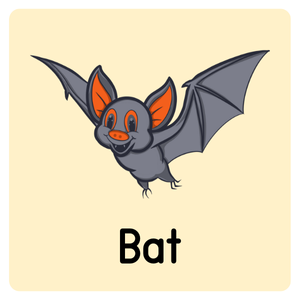
Albatross
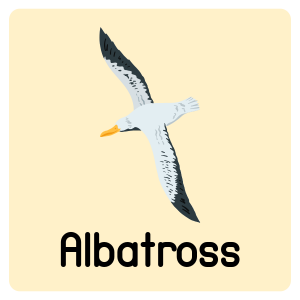
Firefly
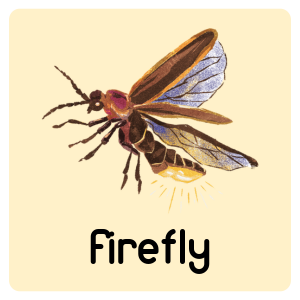
Dragonfly
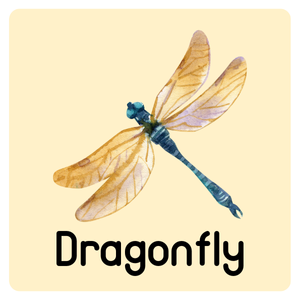
Below is a table showing common flying animals with their names, types and descriptions:
| Flying Animal Name | Type | Brief Description |
|---|---|---|
| Eagle | Bird | A strong raptor known for high-speed flight |
| Parrot | Bird | A colorful bird that can mimic sounds |
| Bat | Mammal | Nocturnal mammal that uses echolocation |
| Dragonfly | Insect | Fast-flying insect with two pairs of wings |
| Butterfly | Insect | Insect with vibrant wings and short lifespan |
| Flying Squirrel | Mammal | Glides using skin flaps between limbs |
| Pigeon | Bird | Common city bird with strong flying skills |
| Hawk | Bird | Sharp-eyed bird of prey |
| Bee | Insect | Small insect important for pollination |
| Flying Lizard | Reptile | Glides using rib-supported wing-like flaps |
| Moth | Insect | Nocturnal insect similar to butterfly |
| Owl | Bird | Night predator bird with silent flight |
| Crow | Bird | Smart bird found in urban and rural areas |
| Hummingbird | Bird | Small bird that can hover in place |
| Mayfly | Insect | Short-lived flying insect |
| Housefly | Insect | Common flying insect found in homes |
| Locust | Insect | Grasshopper-like insect that forms swarms |
| Goose | Bird | Migratory bird that flies in V-formations |
| Albatross | Bird | Seabird known for very long wingspan |
| Firefly | Insect | Glows at night while flying |
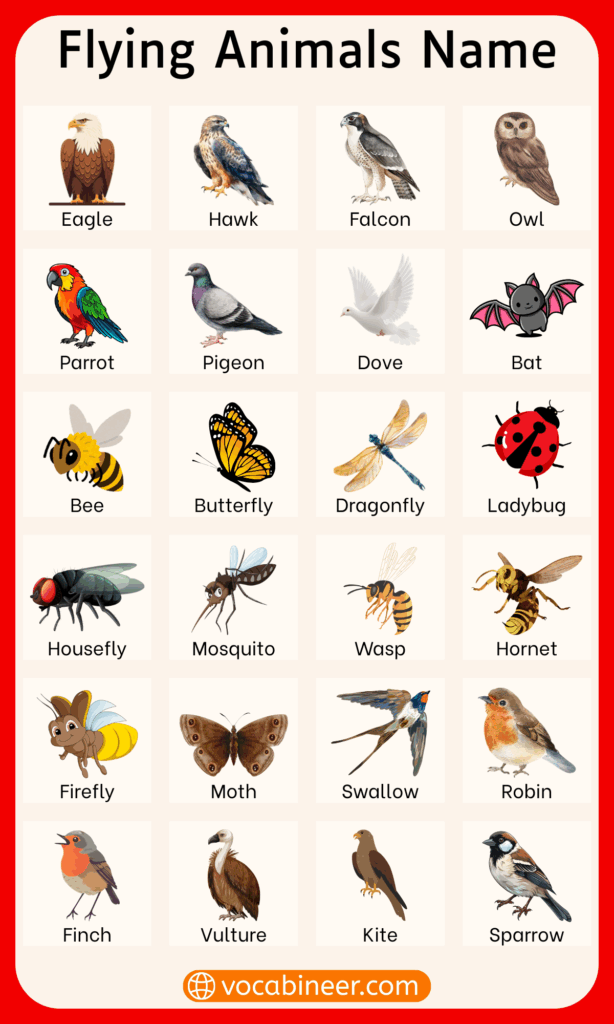
Flying Animals from A to Z in English
Flying creatures appear in every letter of the alphabet. Below is a complete A–Z list grouped into smaller sections for easier reading.
A to H — Common Flyers from Each Letter
These flying animals include birds, insects, and some unexpected species:
- Albatross: Large ocean bird with long wings
- African grey parrot: Known for intelligence and mimicking sounds
- Antlion: Insect with winged adult stage
- Bat: Nocturnal flying mammal
- Bee: Small insect that collects nectar
- Buzzard: Bird of prey found in open lands
- Butterfly: Colorful winged insect
- Crow: Intelligent black bird
- Crane: Tall bird with long legs
- Cicada: Loud-voiced insect seen in warm weather
- Dragonfly: Fast insect with two pairs of wings
- Dove: Soft-colored bird often seen in cities
- Damselfly: Slender flying insect
- Eagle: Powerful raptor with sharp eyes
- Eastern bluebird: Small bird with bright blue feathers
- Falcon: High-speed hunting bird
- Firefly: Glowing insect at night
- Flycatcher: Bird that catches flying insects
- Goose: Migratory bird with loud calls
- Goldfinch: Yellow and black songbird
- Gnat: Tiny flying insect
- Hawk: Sharp-beaked hunting bird
- Housefly: Common indoor flyer
- Hummingbird: Fast-flapping bird that hovers in air
I to P — Birds, Insects, and More That Fly
These names include tropical birds, gliders, and bugs:
- Indian roller: Brightly colored South Asian bird
- Imperial moth: Large-winged moth species
- Junco: Small grey songbird
- Jackdaw: Crow-like bird found in Europe
- Kite (bird): Graceful bird of prey
- Kingfisher: River bird with sharp beak
- Locust: Swarming grasshopper-like insect
- Lark: Known for singing while flying
- Ladybug: Red beetle that glides briefly
- Moth: Insect with furry wings
- Magpie: Black-and-white bird known to collect shiny objects
- Mockingbird: Mimics other birds’ calls
- Nighthawk: Night-flying insect eater
- Nightjar: Camouflaged night flyer
- Owl: Night-hunting bird with silent wings
- Osprey: Fish-catching raptor
- Parrot: Colorful tropical bird
- Pigeon: Common city bird
- Pelican: Big-beaked bird that dives for fish
- Peacock butterfly: Insect with eye-like wing markings
Q to Z — Unique and Lesser-Known Flying Creatures
This group includes rare names and gliders:
- Quail: Ground bird that flies in short bursts
- Raven: Large black bird, very intelligent
- Robin: Red-breasted bird known for song
- Red kite: Elegant bird with forked tail
- Sparrow: Small, busy city bird
- Swallow: Air acrobat with forked tail
- Starling: Noisy birds that form large flocks
- Swift: One of the fastest birds in flight
- Toucan: Bright-billed bird from rainforests
- Thrush: Brown spotted forest bird
- Tern: Seabird with pointed wings
- Umbrella bird: Bird with umbrella-shaped crest
- Vulture: Scavenger with bald head
- Vesper bat: Common bat type
- Woodpecker: Bird that taps tree trunks
- Wren: Tiny brown songbird
- Waxwing: Smooth bird with shiny feathers
- Xylocopa: Giant bee species
- Yellow warbler: Bright bird that sings
- Yellowjacket: Aggressive flying wasp
- Zebra swallowtail: Striped butterfly with long tails
Main Types of Flying Animals in English
Flying animals belong to different categories depending on their body structure and adaptation. Below is a full breakdown.
Birds That Fly
Birds are the most famous flyers. They have feathers, hollow bones, and wings.
- Eagle
- Parrot
- Owl
- Pigeon
- Hawk
- Hummingbird
- Falcon
- Crow
- Swallow
- Dove
- Vulture
- Magpie
- Robin
- Sparrow
- Thrush
- Kite
- Tern
- Kingfisher
- Woodpecker
- Wren
These birds differ in size, habitat, and flight speed, but all rely on wings to travel.
Insects with Wings
Insects are lightweight and many have two pairs of wings. Some use them to flap, others to glide.
- Bee
- Butterfly
- Dragonfly
- Housefly
- Moth
- Firefly
- Mosquito
- Gnat
- Cicada
- Mayfly
- Ladybug
- Locust
- Horsefly
- Wasp
- Hornet
- Termite (winged)
- Ant (winged)
- Katydid
- Crane fly
Most of these use flight for mating, feeding, or escape.
Mammals That Fly or Glide
Mammals can’t truly fly except for bats. Others like squirrels glide using a membrane.
- Bat
- Flying fox
- Fruit bat
- Flying squirrel
- Sugar glider
- Colugo (flying lemur)
These creatures are nocturnal and often nest in trees or caves.
Gliding Reptiles, Amphibians, and Fish
Some reptiles and fish can’t flap wings but still travel through air by gliding.
- Flying lizard (Draco): Uses ribs to stretch skin wings
- Flying snake: Flattens its body to glide
- Gliding gecko: Jumps between trees
- Flying frog: Webbed feet for air control
- Flying fish: Escapes predators by gliding above waves
Their gliding ability is used for safety and hunting.
Flying Creatures That Are Not Birds
Some flying animals don’t have feathers at all. They fly or glide using other adaptations.
Winged Insects with Flight Ability
These include insects that have evolved strong flight muscles:
- Butterfly
- Bee
- Firefly
- Horsefly
- Moth
- Mayfly
- Cicada
- Yellowjacket
- Wasp
- Hornet
Each has a unique flight style, from hovering to darting to spinning in air.
Gliding Mammals and Tree-Dwelling Flyers
These mammals don’t flap but use skin membranes to soar between branches:
- Flying squirrel
- Sugar glider
- Colugo
- Flying fox
- Fruit bat
They are excellent climbers and most are found in tropical forests.
Non-Avian Flyers in Nature
Other gliders are from different animal groups:
- Flying fish
- Flying lizard
- Flying snake
- Flying frog
These are often used in science lessons to show how flight evolved.
Rare and Exotic Flyers from Around the World
These species are not commonly found or known, but they are remarkable flyers.
Uncommon Flying Species You May Not Know
- Colugo: Glides more than 100 meters
- Flying dragon lizard: Has rib-supported wings
- Giant swiftlet: Lives in remote caves
- Atlas moth: One of the largest moths
- Gliding ant: Drops from tree branches
- Flying fish: Escapes water predators
- Hoatzin: Baby has claws on wings
- Fairyfly: Tiny wasp-like insect
- Bee-eater: Tropical bird that snatches bees in mid-air
- Lyrebird: Imitates sounds while flying
Region-Specific Gliding Animals
- Flying frog (Asia)
- Sugar glider (Australia)
- Flying snake (India and Southeast Asia)
- Flying lizard (Philippines)
- Flying squirrel (North America and Asia)
Their habitats, flight purpose, and survival needs differ based on environment.
- Dragon
- Griffin
- Pegasus
- Phoenix
- Fairy
- Hippogriff
100 Flying Animals Names in English (Birds, Insects, Mammals )
Here is a comprehensive list of 100 flying animals names in English, including birds, insects, mammals, and others that are capable of flight (natural or gliding).
- Eagle
- Falcon
- Hawk
- Owl
- Pigeon
- Dove
- Crow
- Raven
- Parrot
- Macaw
- Cockatoo
- Sparrow
- Finch
- Robin
- Swallow
- Swift
- Nightjar
- Bat
- Fruit Bat
- Flying Fox
- Flying Squirrel
- Sugar Glider
- Flying Lemur
- Flying Fish
- Flying Lizard
- Butterfly
- Moth
- Bee
- Wasp
- Hornet
- Dragonfly
- Damselfly
- Mosquito
- Housefly
- Horsefly
- Crane Fly
- Firefly
- Cicada
- Mayfly
- Ladybug
- Fire Beetle
- Locust
- Grasshopper
- Katydid
- Termite
- Ant
- Crane
- Stork
- Pelican
- Flamingo
- Heron
- Ibis
- Goose
- Duck
- Swan
- Seagull
- Tern
- Albatross
- Petrel
- Puffin
- Hummingbird
- Kingfisher
- Woodpecker
- Magpie
- Jay
- Starling
- Blackbird
- Mynah
- Kite
- Vulture
- Condor
- Harpy Eagle
- Buzzard
- Kestrel
- Osprey
- Toucan
- Lyrebird
- Hoopoe
- Roller
- Bee-eater
- Sunbird
- Swiftlet
- Hornbill
- Quail
- Grouse
- Partridge
- Bowerbird
- Manakin
- Gliding Ant
- Atlas Moth
- Emperor Dragonfly
- Fairyfly
- Giant Water Bug
- Bald Eagle
- Snowy Owl
- Yellow Jacket
- Cicada Killer Wasp
- Hercules Beetle
- Stick Insect
- Flying Snake
Flying Animals vs Non-Flying Animals
Below is a comparison of flying and non-flying animals:
| Feature | Flying Animals | Non-Flying Animals |
|---|---|---|
| Locomotion | Wings or gliding structures | Legs, fins, crawling limbs |
| Examples | Eagle, Bat, Butterfly | Tiger, Elephant, Whale |
| Adaptations | Hollow bones, wings, light body | Strong limbs, heavy body |
| Purpose of Flight | Migration, escape, hunting | Walk, swim, climb |
FAQs About Flying Animals in English
Animals that can fly are usually called flying animals, including birds, insects, and some mammals and reptiles.
There are thousands of flying species, including over 10,000 bird species, 1 million insects, and a few mammals and reptiles.
Examples include bats, flying squirrels, butterflies, and flying lizards.
The bee hummingbird is the smallest bird, and the fairyfly is the smallest flying insect.
Bats are the only mammals capable of true flight. Other mammals like flying squirrels and colugos glide but do not truly fly.
Read More


